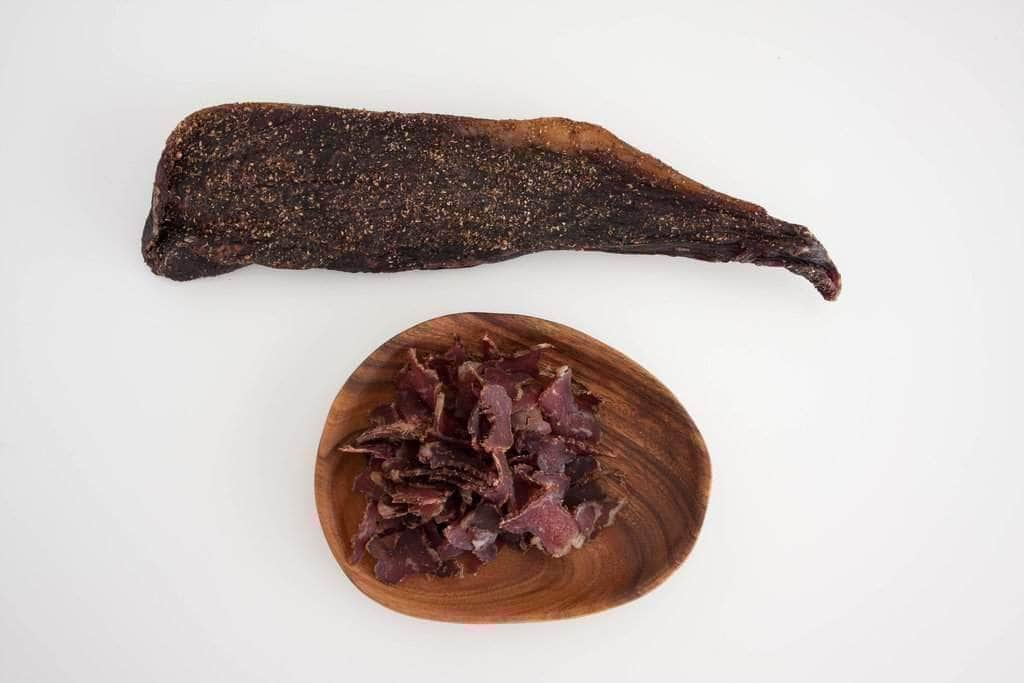While biltong and beef jerky are similar in that they are both dried meats, there are three main differences between the two, namely the ingredients, taste and production process.
What ingredients are used in Biltong and Jerky?
Although beef is most commonly used in both biltong and jerky, the beef used in biltong is generally much thicker due to the cut of the meat and slower drying time. Typically meat is cut into strips that are one inch wide – sometimes thicker – where as jerky is normally very thin.
Vinegar, salt and spices are added to biltong and, together with the drying process, cure the meat. Jerky is also dried, but without the addition of vinegar and salt.
How different does Biltong and Beef Jerky taste?
The vinegar and spices used in the production process also add extra flavor to biltong. While beef jerky often has a dry and smoky taste, (jerky is often smoked, while biltong is never smoked) biltong offers a unique meat flavor.
The thin strips of jerky also contain very little fat. Biltong on the other hand is made from a variety of different cuts, some of which contain more than 50 per cent fat volume. Because of this biltong is more diverse than beef jerky. Depending on how you decide to make it, biltong can be dry and crumbly with no fat, or soft and chewy with more fat on it.
How are Biltong and Beef Jerky made differently?
Biltong is made with the absence of heat, while most jerky is cooked in a dehydrator for 6 to 12 hours. Biltong is specifically air dried for up to a week by hanging on hooks. Biltong’s use of vinegar – whether white, brown or apple cider – is not specifically for taste (that’s a bonus), but as a curing agent, and to help keep flies off the meat as it dries.
The extra ingredients, along with the weeklong aging process, give biltong a taste that is distinct from beef jerky.
If you want to taste the difference for yourself you can visit our online biltong shop.
